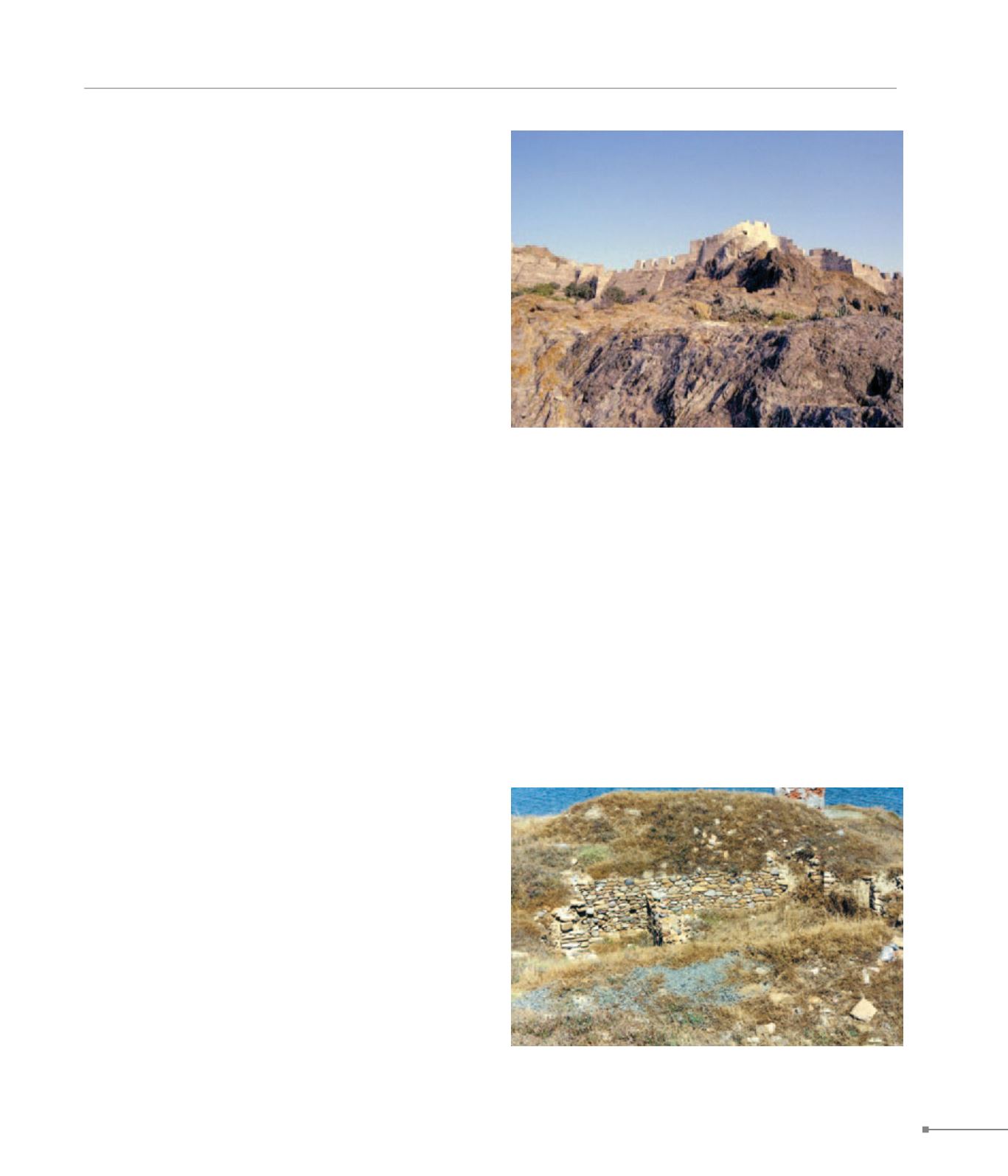
Lemnos.
Lemnos.
THE ISLANDS
317
566. Lemnos, fortress of Kotsinas (Λήμνος, φρούριο Κότσινα.)
566. Lemnos, fortressof Myrina (Λήμνος, κάστρο της Μύρινας.)
566.
Lemnos.
On Lemnos only two Early Christian sites have been discov-
ered, one in Mavra Ampelia (3) and the other in Angariones
(2), close to a Post-Byzantine monastic complex. Of great sig-
nificance is the fortress of Myrina (1), which was established
on the site of a smaller castle of 1186. It was repaired by
Filocalo Paolo Navigaioso, Grand Admiral of Romania, in the
period 1207-14, according to an inscription, accompanied by
the Lion of Venice, that was embedded in the main gate. The
fortress was strengthened by Leonardo Navigaioso, another
member of that ruling family, and was repaired by the Gat-
telusi (later rulers) in the first half of the 14th c. With 14 towers
in total, it has a polygonal plan and stretches nearly 15 ha.
Within the fortress are the scattered ruins of numerous build-
ings, caves and rock-cut structures. Its present-day form is
the result of many building phases, some of which have been
recognised, while others need to be investigated.
In a cave in the locality of Thanos (5), close to the village of
Zematas, stands the church of Panagia Kakkaviotissa, which
is the catholicon of a hermitage. It is one of the many meto-
chia on the island and has been known since 1305, when it
devolved to the Great Lavra monastery on Mount Athos. The
church is single-nave and is surrounded by the remains of
cells. Its impressive but inaccessible location is on the top of
the mountain that hosted an Early Christian church and her-
mits in the Byzantine period.
In the N of Lemnos, near ancient Hephaestia, on Bournias
bay stands the fortress of Kotsinas, which was attested as a
“location” in 1136, when the archbishop of Lemnos donated
the small church of Aghios Vlasios to the Venetians, who had
settled in the area. From the 13th c. the site was home to the
population of Hephaestia. The settlement was fortified against
pirates and would-be conquerors (probably the Venetian Navi-
gaiosi family, who dominated the island in the years 1207-78).
On a 1355 chrysobull of John V Palaeologus, Kotsinas was
mentioned as a castle with a guard. Part of a marble archi-
tectural element bearing the Palaeologus monogram and the
name Demetrios – today in the Museum of Lemnos – was
once incorporated in the castle. Most probably it refers to the
despot (Byzantine prince) of Moreas (1449-60), Demetrios
Palaeologus, fifth son of Emperor Manuel II, to whom Lem-
nos was ceded in 1460. The castle was built on an artificial
hill and in the shape of a parallelogram. Three of its sides are
surrounded by a moat formed from an artificial dyke, while to-
wards the sea there are four-sided defence towers. Within the
castle, since 1415 there has been a Byzantine chapel dedicat-
ed to Panagia, featuring an earlier underground quadrilateral
agiasma (sacred spring) that could be reached via 64 steps.
It is probably a defensive work that existed prior to the castle.


